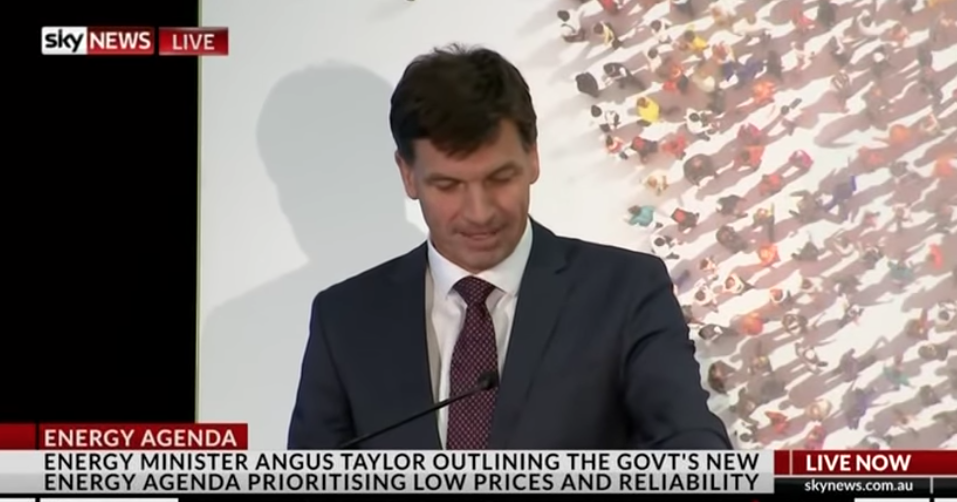The fact that Australia is moving towards the 50% renewables share by 2030 is no more news, but this time the confirmation came from Energy Minister Angus Taylor, the man who claimed that having too much wind and solar would be fatal for Australia’s economy. Gushing about the nation’s renewable energy track record in its latest media release, Taylor has conceded that the growing share of renewable electricity will be key to reducing emissions by 2030.
In an announcement issued on Thursday, Taylor said emissions are forecast to fall by 23% by 2030 as the share of renewable energy increases to more than a third in the early 2020s and 48% by 2030. As confirmed in its 2019 emissions projections report, the federal Coalition is now eyeing the 50% renewables goal by 2030 despite criticizing that same target as reckless and economy-wrecking when proposed by Labor during the last election.
A known wind energy opponent, Taylor claimed that there was already too much wind and solar on the Australian grid when appointed in 2018. However, he was ready to claim the credit for the new installation records set last year. “In 2019, we set new records for renewable capacity installation and total electricity generated from renewables,” he said. The minister quoted the Clean Energy Regulator’s estimates that a record 6.3 GW of new renewable capacity was installed in 2019, 24% above the previous record set in 2018.
However, the current Federal Government had little to do with this achievement. Instead, it made sure there is a policy vacuum beyond 2020 with no replacement for the Renewable Energy Target (RET) that can drive further investment in large-scale renewables. Taylor, who vowed to kill the RET when he entered parliament in 2013, said on Thursday that Australia invested $7.7 billion or $308 per person in renewable energy in 2019, referring to Bloomberg New Energy Finance’s latest data.
What he failed to mention, however, are the key finding on 2019 investment trends issued by BNEF last week, showing investment in Australian renewable energy capacity fell 40% down from record-breaking levels seen in 2018. Investment in onshore wind farms plunged to just US$1.6 billion from US$3.7 billion, while investment in utility-scale solar fell to US$1.2 billion from US$3 billion in 2018, and according to the analysts, this happened due to network woes and long-term policy uncertainty.
Nonetheless, the road to 50% renewables by 2030 appears now difficult to miss with Australian state and territory governments doing the heavy-lifting on climate change. Tasmania and the Australian Capital Territory are already 100% renewable electricity-powered, South Australia is rapidly growing its renewable energy fleet currently at 50%, while Queensland and Victoria strive towards 50% green energy by 2030. New South Wales is seeking to retire many of its coal clunkers by that time.
This content is protected by copyright and may not be reused. If you want to cooperate with us and would like to reuse some of our content, please contact: editors@pv-magazine.com.









2 comments
By submitting this form you agree to pv magazine using your data for the purposes of publishing your comment.
Your personal data will only be disclosed or otherwise transmitted to third parties for the purposes of spam filtering or if this is necessary for technical maintenance of the website. Any other transfer to third parties will not take place unless this is justified on the basis of applicable data protection regulations or if pv magazine is legally obliged to do so.
You may revoke this consent at any time with effect for the future, in which case your personal data will be deleted immediately. Otherwise, your data will be deleted if pv magazine has processed your request or the purpose of data storage is fulfilled.
Further information on data privacy can be found in our Data Protection Policy.